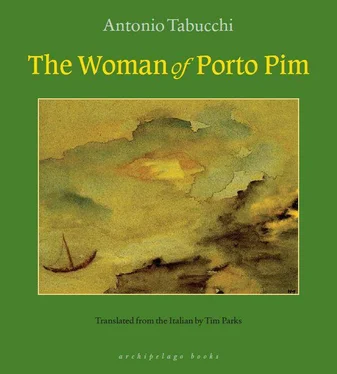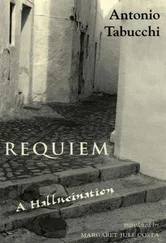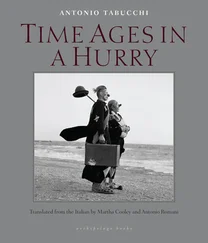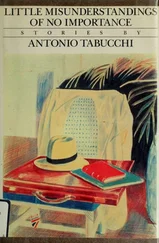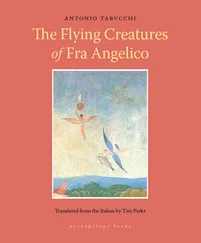As I come out of the museum, a surprise awaits me. From the end of the street, still deserted, appears a band. They are old men and boys dressed in white with sailor’s caps, their brass buttons brightly polished and winking in the sun. They’re playing a melancholy air, a waltz it seems, and they play it beautifully. In front of them walks a little girl holding a staff on the end of which two bread rolls and a dove made of sugar have been skewered. I follow the little procession in their lonely parade along the main street as far as a house with blue windows. The band arranges itself in a semicircle and strikes up a dashing march. A window opens and an old man with a distinguished look to him greets them, leaning out, smiling. He disappears, then reappears a moment later on the doorstep. He is met with a short burst of applause, a handshake from the bandleader, a kiss from the little girl. Obviously this is a homage, though to whom or what I don’t know, and there wouldn’t be much sense in asking. The very short ceremony is over, the band rearranges itself into two lines, but instead of turning back they set off toward the sea which is right there at the bottom of the street. They start playing again and I follow them. When they reach the sea they sit on the rocks, put their instruments down on the ground and light up cigarettes. They chat and look at the sea. They’re enjoying their Sunday. The girl has left her staff leaning against a lamppost and is playing with a friend her own age. From the other end of the village the bus honks its horn, because at six it will be making its only trip to Madalena, and right now it’s five to.
There are two sorts of whalemen in the Azores. The first come from the United States on small schooners of around a hundred tons. They look like pirate crews, because of the motley of races they include: negroes, Malays, Chinese, and indefinable cosmopolitan crosses of this or that, are all mixed up with deserters and rascals using the ocean as a means of escape from the justice of men. An enormous boiler takes up the centre of the schooner; it is here that the chunks of lubber cut from the captured sperm whale, which is tied to scaffolding beside the ship’s hull, are transformed into oil using an infernal cooking process constantly disturbed by the pitch and roll of the boat: meanwhile coils of sickening smoke wreath all about. And when the sea is rough what a wild spectacle it becomes! Rather than give up the fruits of prey heroically snatched from the belly of the Ocean, these men prefer to put their lives in jeopardy. To double the ropes holding the whale to the scaffolding, a number of men will risk their lives climbing out on that enormous oily mass awash with rushing water, its great bulk tossed about by the waves and threatening to smash the hull of the schooner to pieces. Having doubled the ropes they will hang on, prolonging the risk to the point where it is no longer tolerable. Then they cut the hawsers and the whole crew shouts violent, angry imprecations at the carcass as it drifts off on the waves, leaving only a terrible stench where before it had inspired dreams of riches.
The other group of whalemen is made up of people more similar to common mortals. They are the fishermen of the islands, or even adventurous farmers, and sometimes simple emigrants who have come back to their own country, their souls tempered by other storms in the Americas. Ten of them will get together to make the crews for two whaling boats belonging to a tiny company with a capital of around thirty thousand francs. A third of the profits go to the shareholders, the other two thirds are divided equally between members of the crews. The whaling sloops are admirably built for speed and fitted with sails, oars, paddles, an ordinary rudder and an oar rudder. The hunting tools include several harpoons (their points carefully protected in cases), a number of fairly sharp steel lances, and five or six hundred metres of rope arranged in spirals inside baskets from which it runs forward through an upright fork on the prow of the boat.
These small boats lie in wait, concealed on small beaches or in the rocky bays of these inhospitable little islands. From a highpoint on the island a look-out constantly scans the sea the way a topman does on a ship; and when that column of watery stream the sperm whale blows out from his spiracle is sighted, the look-out musters the whalemen with an agreed signal. In a few minutes the boats have taken to the sea and are heading towards the place where the drama will be consummated.
Albert I, Prince of Monaco, La Carrière d’un navigateur, pages 280–83
F
ROM A
C
ODE OF
R
EGULATIONS
I
Concerning the Whales
Art. 1. These regulations are valid for the hunting of those whales indicated below when hunting is carried out in the territorial waters of Portugal and of the islands over which Portugal holds sovereignty:
Sperm whale, Physeter catodon (Linnaeus)
Common Whale, Baloenoptera physalus (Linnaeus)
Blue Whale, Baloenoptera musculus (Linnaeus)
Dwarf Whale, Baloenoptera acustorostrata (Linnaeus)
Hump-backed Whale or “Ampebeque,” Megaptera nodosa (Linnaeus)
II
Concerning the Boats
Art. 2. The craft used in the hunt shall be as follows:
a) Whaling sloops. Boats without decks, propelled by oar or sail, used in the hunt, that is to harpoon or kill the whales.
b) Launches. Mechanically propelled boats used to assist the whaling sloops by towing them and the whales killed. When necessary and within the terms of these regulations, such boats may be used in the hunt itself to surround and harpoon the whales.
Art. 44. The dimensions of whaling sloops are fixed by law as follows: length, from 10 to 11.5 metres; width, from 1.8 to 1.95 metres.
Art. 45. The launches must have a weight of at least 4 tons and a speed of at least 8 knots.
Art. 51. In addition to such tools and equipment as are necessary for the hunt, all whaling boats must carry the following items on board: an axe to cut the harpoon rope if this should be necessary; three flags, one white, one blue, one red; a box of biscuits; a container with fresh water; three Holmes luminous torches.
III Concerning the Conduct of the Hunt
Art. 54. It is expressly forbidden to hunt whales with less than two boats.
Art. 55. It is forbidden to throw the harpoon when the boats are at such a distance from each other as not to be able to offer mutual assistance in the event of an accident.
Art. 56. In the event of an accident, all boats in the vicinity must assist those in difficulty, even if this means breaking off the hunt.
Art. 57. If a member of the crew should fall overboard during the hunt, the master of the boat involved will break off all hunting activity, cutting the harpoon rope if necessary, and will attend to the recovery of the man overboard to the exclusion of all else.
Art. 57a. If a boat captained by another master is present at the place where the accident occurs, this boat cannot refuse the necessary assistance.
Art. 57b. If the man overboard is the master, command will pass to the harpooneer, who must then follow the regulation described at Art. 57.
Art. 61. The direction of the hunt will be decided by the senior of the two masters, except where prior agreement to the contrary has been declared.
Art. 64. In the event of dead or dying whales being found out at sea or along the coast, those who find them must immediately inform the maritime authorities who will have the responsibility of proceeding to verify the report and to remove any harpoons. The finder of the whale will have the right to remuneration which will be paid under the terms of Art. 685 of the Commercial Code.
Читать дальше
